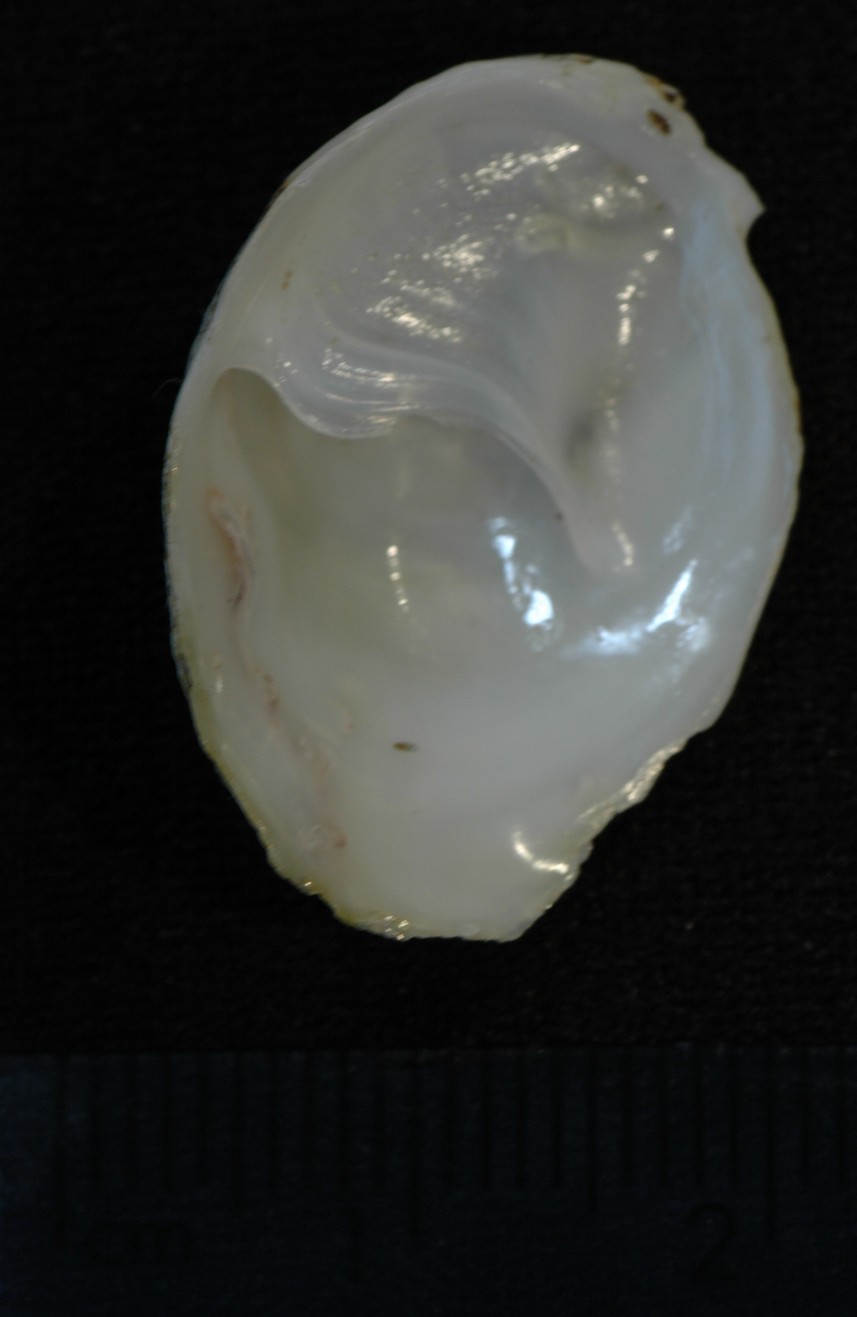Crepidula perforans (Valenciennes, 1846)Common name(s): Western white slipper shell, Western white slipper snail |
|
| Synonyms: Crepidula williamsi |  |
| Phylum Mollusca
Class Gastropoda Subclass Prosobranchia Order Mesogastropoda Suborder Taenioglossa Family Calyptraeidae |
|
| Crepidula perforans attached inside the aperture of a whelk shell which is occupied by a hermit crab | |
| (Photo by: Dave Cowles, July 2005) | |
How to Distinguish from Similar Species: Crepidula nummaria has a yellow-brown periostracum. Crepidula fornicata has the apex to the side. Few other species besides this one live inside gastropod shells with hermit crabs.
Geographical Range: Vancouver Island to Baja California
Depth Range: Almost completely subtidal in Puget Sound
Habitat: Occasionally on rock, often inside apertures of shells, inside holes of rock-boring clams.
Biology/Natural History: In Alaska, is sometimes found on the operculum of the Oregon (hairy) triton, Fusitron oregonensis. Crepidula nummaria may be synonymous with this species. The systematics needs to be worked out better. The females brood their young, which can distinguish this species from C. nummaria.
| Return to: | |||
| Main Page | Alphabetic Index | Systematic Index | Glossary |
References:
Dichotomous Keys:Flora and Fairbanks, 1966
Kozloff 1987, 1996
Smith and Carlton, 1975
General References:
Harbo,
1997
Kozloff,
1993
Morris
et al., 1980
O'Clair
and O'Clair, 1998
Ricketts
et al., 1985
Scientific Articles:
Web sites:
General Notes and Observations: Locations, abundances, unusual behaviors:

A shelf occupies the anterior portion of the shell. Scale
below
is cm with mm marks. Photo by Dave Cowles July 2005
Authors and Editors of Page:
Dave Cowles (2005): Created original page